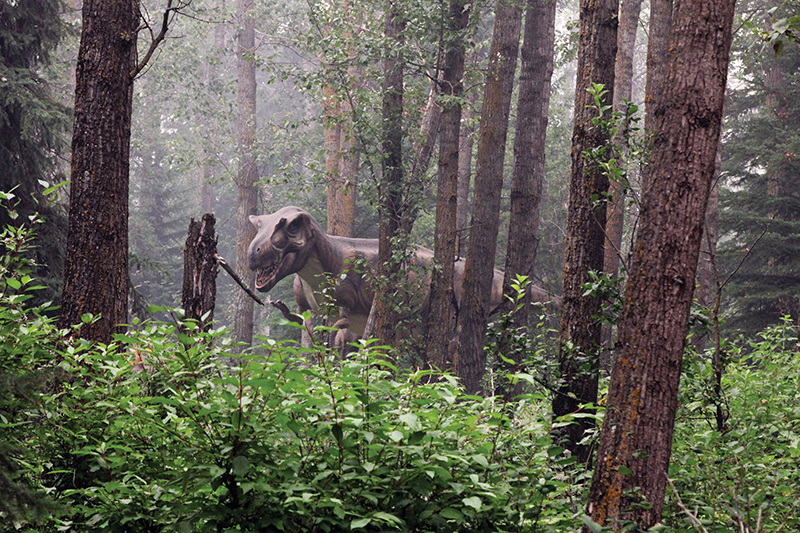It’s been 20 years since the original Jurassic Park film came out. But, if the recent release of the 3D version of that same film has taught us anything, it’s that our obsession with dinosaurs isn’t going anywhere.
“I think people are fascinated, first, because there is nothing else alive like dinosaurs today and, second, because of their size,” says Lauryn Pounder, education coordinator and scientific resource consultant at Jurassic Forest, an outdoor facility in Gibbons that boasts about 45 animatronic and robotic dinosaurs. “I think people are interested in the weird and the wonderful.”
Pounder, who studied evolutionary biology at the University of Alberta, says most of the species of the real-life counterparts of the animatronic and robotic dinosaurs at Jurassic Forest have been discovered as fossils in Alberta. Electronic representations of dinosaurs, such as the Albertosaurus, a not-so-distant cousin of Tyrannosaurus Rex, and the duck-billed Edmontosaurus are found in the park and along two kilometres of walking trails.
So just how similar are the electronic dinosaurs at Jurassic Forest to the real, historical deal? As close as they can be, based on what scientists know. The dinosaurs are mostly to scale, except the incredibly large ones. The main mystery is what dinosaurs sounded like – the animatronic dinosaurs at the park make noises created from scientists’ educated guesses, says Pounder. “We usually associate a roar or growl with a carnivorous animal, so we use a sound like that in carnivorous dinosaurs,” says Pounder. For one dinosaur, the Parasaurolophus, paleontologists used computer modeling of the air passages in the crest atop the dinosaur’s head to reconstruct possible sounds.
The big differences between learning about prehistoric creatures at Jurassic Forest versus somewhere like the Royal Tyrrell Museum? First of all, the setting: Jurassic Forest’s outdoor atmosphere is an intentional break from the traditional museum setting, says Greg Suess, general manager of Jurassic Forest. But the most important distinction between fossils and their electronic doppelgangers is that fossils can’t move and they certainly don’t roar, giving a life-like edge to the animated, robotic dinosaurs watching over the park.
